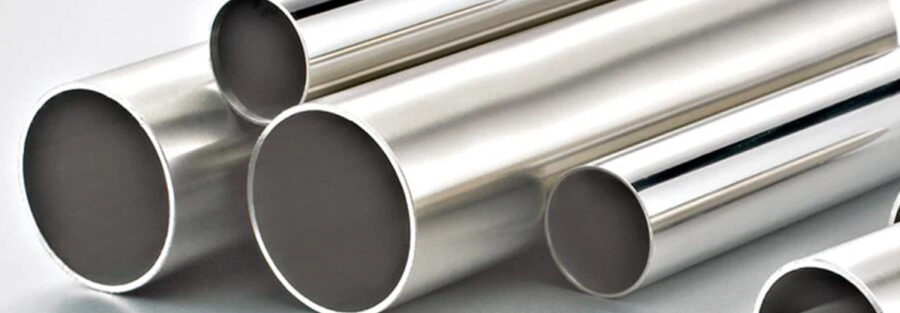Grade 304 vs. 316 Stainless Steel: Which One Should You Choose?
Two common grades of stainless steel, 304 and 316, are frequently considered when choosing stainless steel for pipes, tubes, or other uses. Both are austenitic stainless steels that are incredibly durable, corrosion-resistant, and adaptable. Nonetheless, they are appropriate for various settings and uses due to minor variations in their composition and characteristics. Let’s examine these grades in more detail and decide which one best suits your requirements.
Chemical Composition
Their chemical composition is the primary distinction between Grades 304 and 316:
- Grade 304: About 18% chromium and 8% nickel are present in grade 304. Because of its composition, it has exceptional resistance to corrosion and oxidation.
- Grade 316: Contains 2% molybdenum, 10% nickel, and 16% chromium. Its resistance to pitting and crevice corrosion is improved by the addition of molybdenum, especially in settings that are high in chloride.
Resistance to Corrosion
- Grade 304: Extremely resistant to oxidation and general corrosion. It works effectively in conditions where low salinity, dampness, and exposure to slightly corrosive materials are anticipated. However, in environments with high levels of salt or chloride, such as coastal regions, it may be susceptible to pitting corrosion.
- Grade 316: More resistant to localized corrosion than 304, particularly pitting and crevice corrosion brought on by chlorides. Because of this, it is the best option for chemical processing facilities, maritime applications, and areas with a lot of salt exposure.
Grade 316 is a superior option if your application includes exposure to brine, saltwater, or other harsh chemicals. Grade 304 is often enough for less demanding settings.
Strength and Durability
The mechanical characteristics of 304 and 316 stainless steels, such as hardness and tensile strength, are similar. On the other hand, Grade 316’s molybdenum improves its resistance to increased stress and strain in harsh environments. Furthermore, at higher temperatures, 316 provides superior creep resistance.
Grade 316 offers a minor advantage over 304 if mechanical strength in demanding situations is essential.
Cost Factors
- Grade 304: 304 stainless steel is usually less costly than 316 since it is more widely available and does not include the molybdenum additive.
- Grade 316: This is the most expensive of the two options due to the addition of molybdenum.
Grade 304 is an affordable option for projects with tight budgets that don’t need the improved qualities of 316. The extra cost of Grade 316 is warranted if long-term performance in challenging environments is a top concern.
Uses
- Grade 304:
- Kitchenware and food processing equipment
- Architectural trim and cladding
- Plumbing in the home
- Transportation and automotive parts
- All-purpose tubes and pipes
- Grade 316:
- Coastal and marine equipment
- Chemical and pharmaceutical processes
- Implants and medical devices
- Water treatment facilities and desalination plants
- Tubing and piping in areas with high salinity
When choosing between these grades, take into account the particular application requirements and environmental circumstances.
Fabrication and Weldability
- Grade 304: Preferred for complex designs, grade 304 is easier to shape and manufacture because of its lower molybdenum concentration.
- Grade 316: Because grade 316 contains molybdenum, which can make processing a little more difficult, it needs to be fabricated with greater care.
Grade 304 is easier to employ for basic manufacturing procedures. 316 is a good trade-off if your project calls for more strength or chemical resistance.
Resistance to Temperature
- Grade 304: Excellent oxidation resistance is provided by grade 304 up to 925°C (1700°F) for continuous duty and up to 870°C (1600°F) for intermittent service.
- Grade 316: Offers somewhat improved heat resistance, particularly in situations with constant high temperatures.
Grade 316 is the superior option for applications requiring extended exposure to high temperatures.
Effects on the Environment
The high degree of recyclable nature of both 304 and 316 stainless steels promotes manufacturing sustainability. However, Grade 316 could last longer because of its resilience in harsh conditions, which would lessen the need for replacement and its total environmental effect.
In tough environments, Grade 316 may be a more sustainable option because of its longer service life.
Which One Should You Pick?
The particular needs of your project will determine which stainless steel grade—grade 304 or grade 316—you should choose. This is a brief guide:
- Decide on Grade 304 if:
- You need an affordable choice.
- There is little exposure to harsh chemicals or chlorides, and the climate is generally moderate.
- High formability and overall corrosion resistance are essential for your project.
- Select Grade 316 if:
- The environment includes severe chemicals, seawater, and chlorides.
- More durability is required, particularly for industrial or marine applications.
- Initial cost considerations are outweighed by long-term performance.
You can make an informed choice that guarantees the best possible combination of performance, durability, and cost-effectiveness for your project by being aware of the distinct advantages and disadvantages of these two stainless steel grades. Contact us today for any requirement



